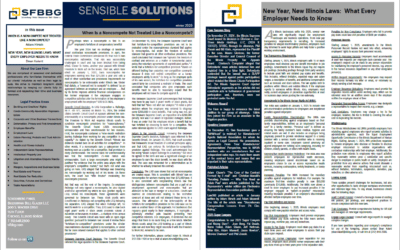Question: What is the most tax efficient way for me to put away a large sum for my grandchildren’s college education?
Answer: Although there are a number of tax saving vehicles available for college savings purposes, a Section 529 education savings plan, named after the Internal Revenue Code Section that creates this opportunity, is one of the most tax effective college savings plans available. Section 529 plans come in different types but the most commonly used program involves a taxpayer contributing funds to an account at a specified institution created for a student’s higher education expenses. Funds contributed to a Section 529 plan are not tax deductible but earnings generated from the plan contributions are tax deferred and, if used for permitted education expenses, are not subject to Federal income tax. Moreover, some States allow income tax deductions for contributions made to Section 529 plans. Section 529 plans also offer gift tax incentives for taxpayers with large estates potentially subject to estate taxes on death.
Unlike many other tax favored college savings programs, higher income taxpayers are not subject to any greater restrictions with Section 529 plans than are middle or lower income taxpayers. This is extremely beneficial as there are no limits on the amount that can be contributed to a Section 529 plan for a beneficiary. There is, however, an overall limitation, determined on a state-by-state basis, on the amount that can accumulate in a beneficiary’s Section 529 plan account at which time no further contributions are allowed. Compared to the alternative of setting funds aside on an after-tax basis, taxpayers saving for college will be well served by utilizing a Section 529 plan.
Generally speaking, Section 529 plans are state sponsored whereby each State offers a different program maintained by a financial institution. Contributors to Section 529 plans are not required to contribute to the program sponsored by their own State nor to the program sponsored by the State where the beneficiary is planning to receive higher education. Account owners have the flexibility to switch funds from one State program to another. Account owners are also permitted to change the investment mix as they choose. A Section 529 plan contributor placing money aside for an infant, for example, may be more inclined to invest the funds in aggressive investments than an account owner whose child or other beneficiary is only a year or two away from commencing post-secondary school education. As with any type of investment, there is no assurance a Section 529 plan account will appreciate in value so account owners are best advised to exercise the same prudence as they would with other funds by reviewing investment performance, monitoring changes in the business world and adjusting the program as circumstances warrant from time to time.
To achieve the desired tax savings from Section 529 plan funds, distributions must be made only for the purposes permitted by the Internal Revenue Code. More specifically, withdrawals generally can only be used for qualified higher education expenses. Such expenses include tuition, books, supplies, computers and similar expenses. If the account beneficiary is enrolled in a program that leads to a degree or certain other educational credentials and the beneficiary is enrolled at least half time, Section 529 plan funds can also be used for room and board. Recent legislative changes now permit Section 529 plan funds to be used for private school expenses in certain respects. For distributions from Section 529 plan accounts that do not satisfy the statutory requirements, a 10% penalty tax is imposed on the earnings portion of the distribution in addition to the income tax on the distributed earnings.
The four-year cost of funding an undergraduate degree for a young child can be daunting, particularly from the perspective of new parents. Continued inflation may only serve to exacerbate the problem. For a wage-earning taxpayer, the opportunity to avoid income taxes on Section 529 plan earnings provides a welcome benefit in seeking to fund what may seem to be in insurmountable obligation. For those students who are fortunate enough to have grandparents with the wherewithal to participate in funding their education, the Section 529 plan rules permit substantial contributions to such accounts. As a final note, anyone considering funding a student’s college education is well advised to begin the process as soon as possible to maximize the use of the tax deferred earnings.
The Tax Corner addresses various tax, estate, asset protection and other business matters. Should you have any questions regarding the subject matter or if you have questions you want answered, you may contact Bruce at (312) 648-2300 or send an e-mail to [email protected].



